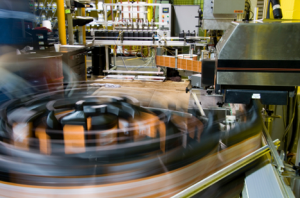Do any of these situations sound familiar?
- Packaging can't keep up with production.
- Packaging is sloppy and damage reports are rising.
- Packaging quality goes down as shifts progress.
- Packaging is taking up too much space in your facility.
You've got workers suffering from repetitive strain injuries. And, because you're so dependent on manual labor, even one employee missing their shift can affect your entire production schedule.
With so much pressure from imports, companies are looking for ways to increase product yield while decreasing packaging costs. But with damage rates starting at 10%, is there really a good way to save money while decreasing damages from improper packaging with the wrong supplies and shifting pallets during shipping?
When you're using packaging automation, you’re using less materials, ensuring a more effective application, and removing the human error element of packaging.
It’s not surprising to hear the chuckles from here. It’s easy enough to write about why packaging automation is the right decision for every facility, but it’s harder to prove. And it’s safe to bet that machines are pretty low on the list of priorities, especially, if your management team is looking for ways to cut costs.
Increased production and decreased expense: two of the best reasons to switch to packaging automation today.
It all sounds good, but how do you know if packaging automation is right for your facility? Where do you start? What do you look for? And how are you going to convince your bosses of the promised ROI?
First, the solution needs to be simple to use and easy to upgrade; you'll want to be capable of running future products at the future speeds that your market will demand. It also enables your operators to quickly and easily change between products, as well as spending less time training.
Second, remember that these machines, like any other, will need to be maintained, minimizing downtime and maximizing utilization.
Third, the materials that you use in your machine play a critical role in their functioning. To perform at high efficiency, machines need to use high quality and consistent materials.
Cost and quality conscious companies are now considering all the additional benefits of implementing a packaging automation system when calculating accurate ROIs: the overall costs of employee absences, health and safety related concerns, packaging waste, and administrative overhead. Careful consideration of all of these factors is critical in determining whether or not packaging automation is right for your facility.



